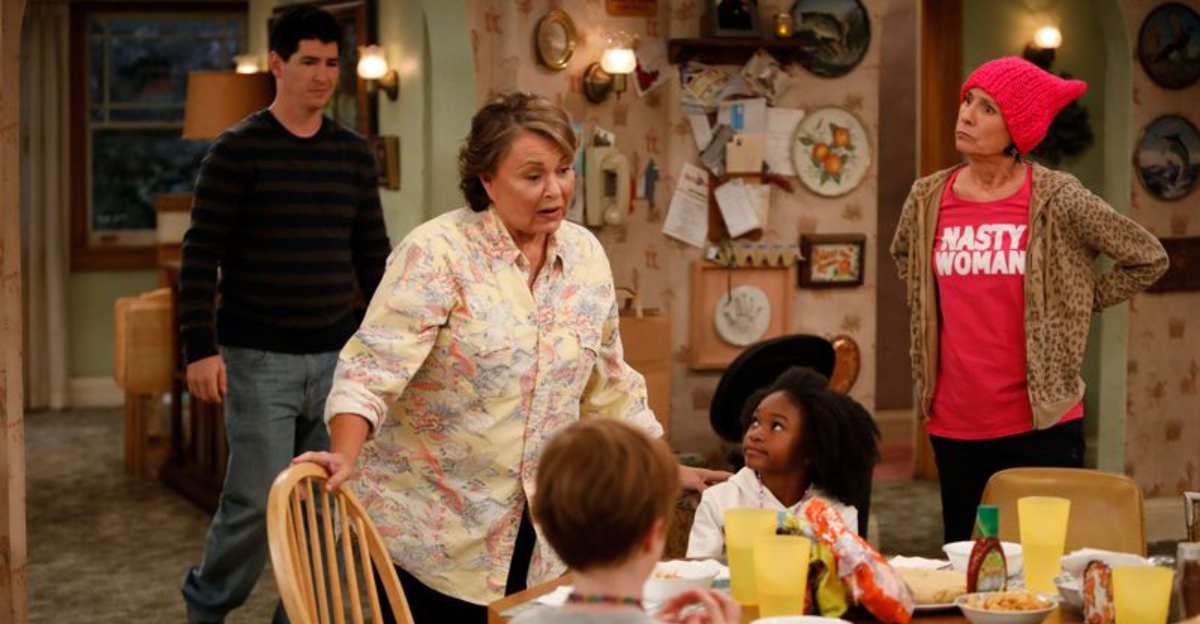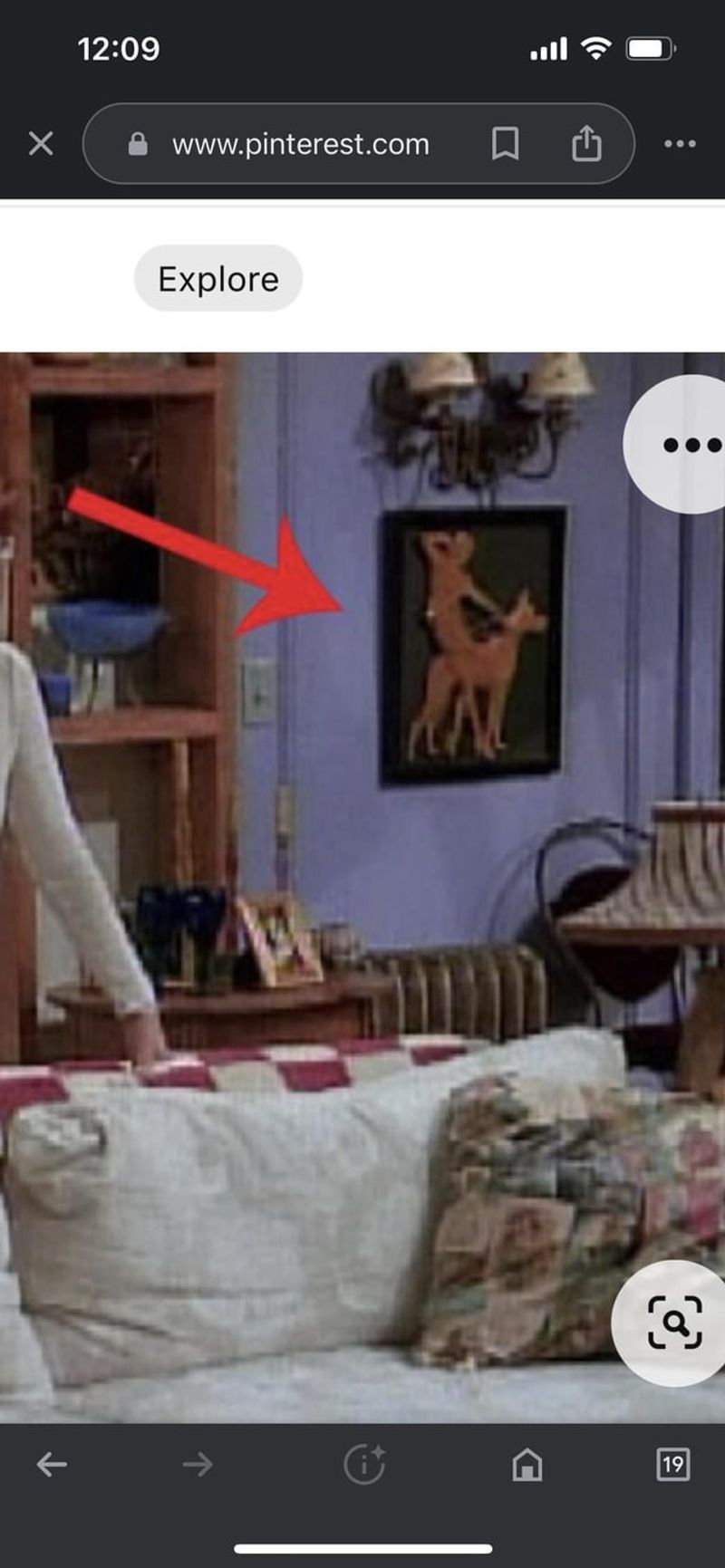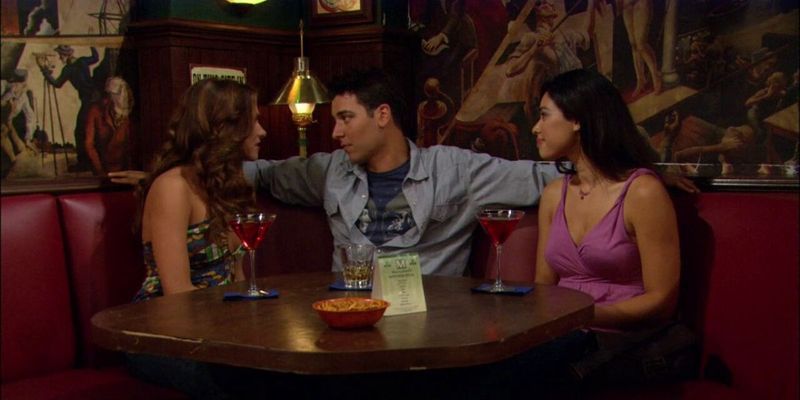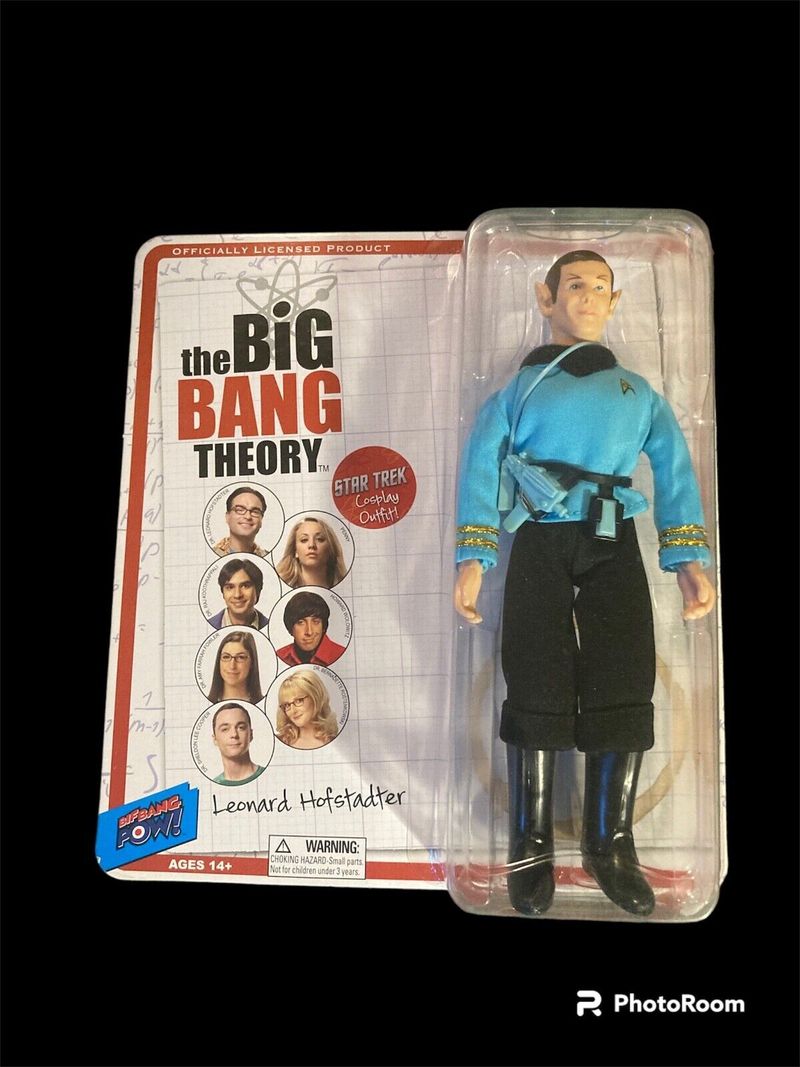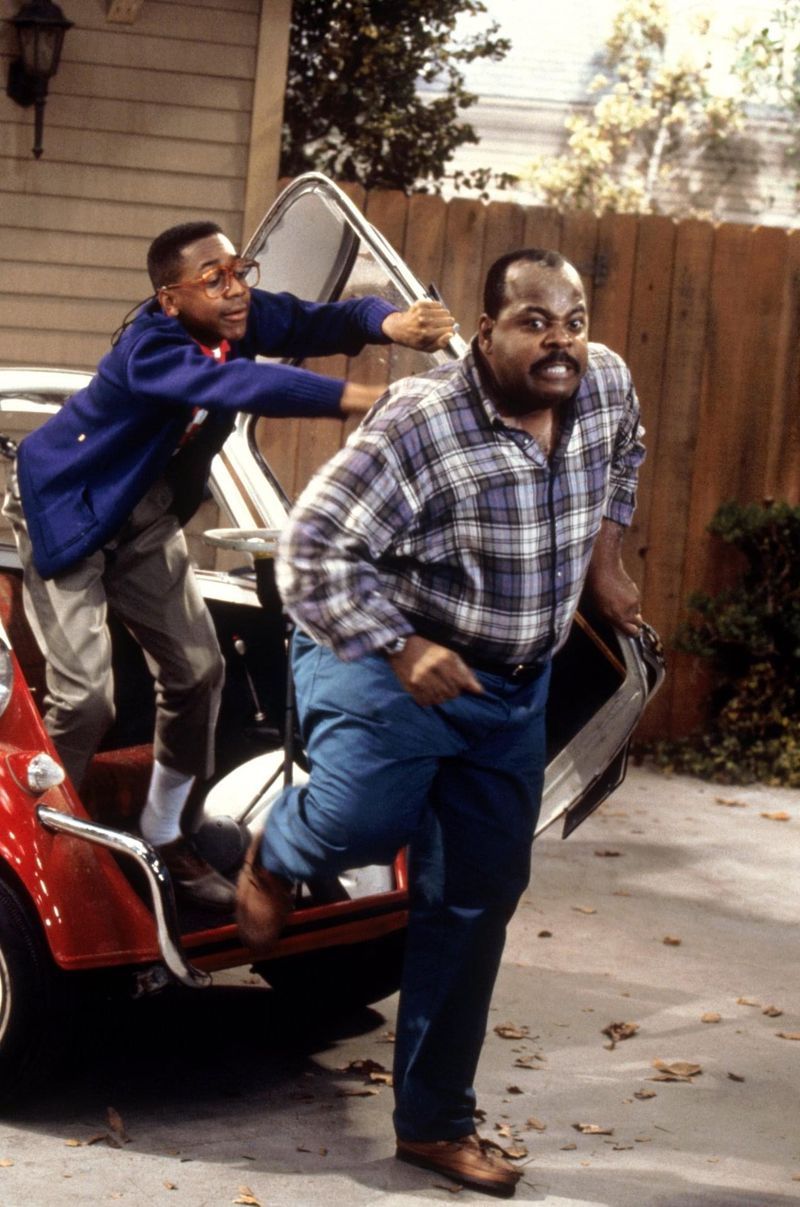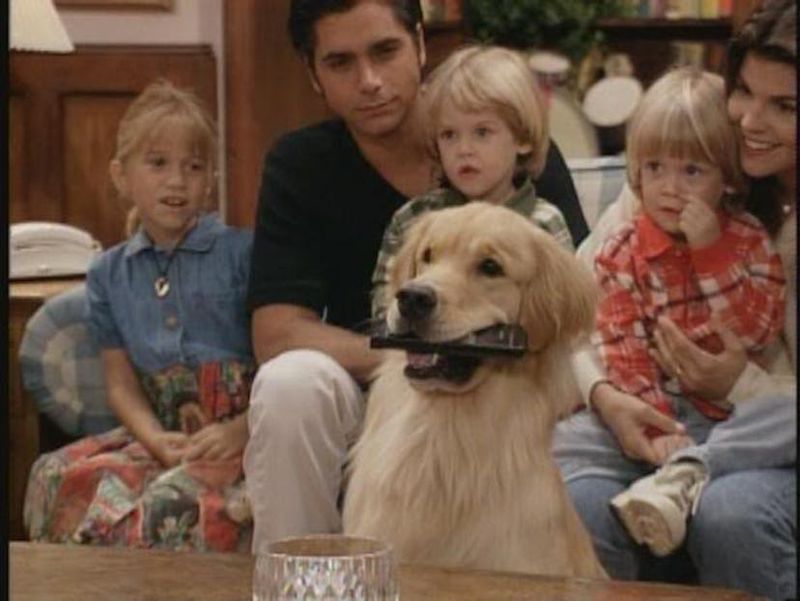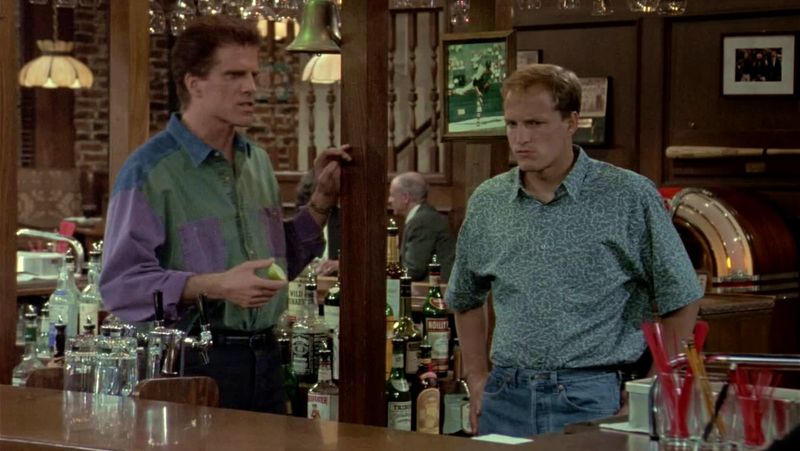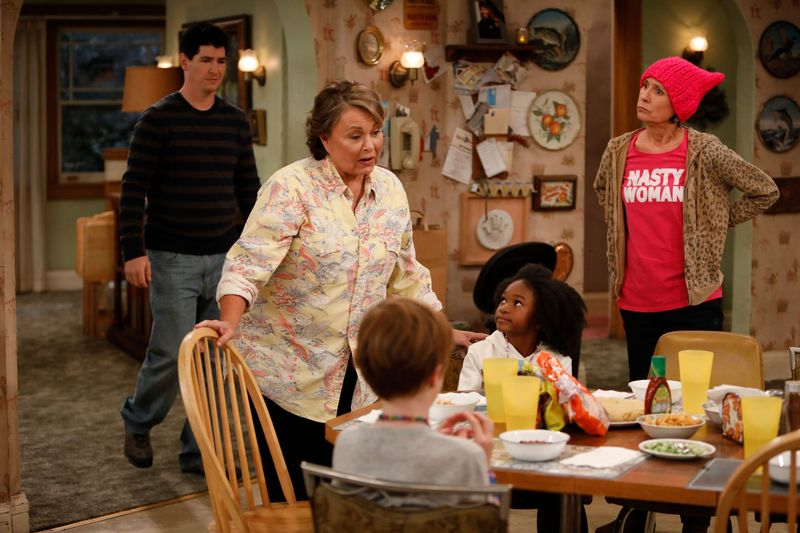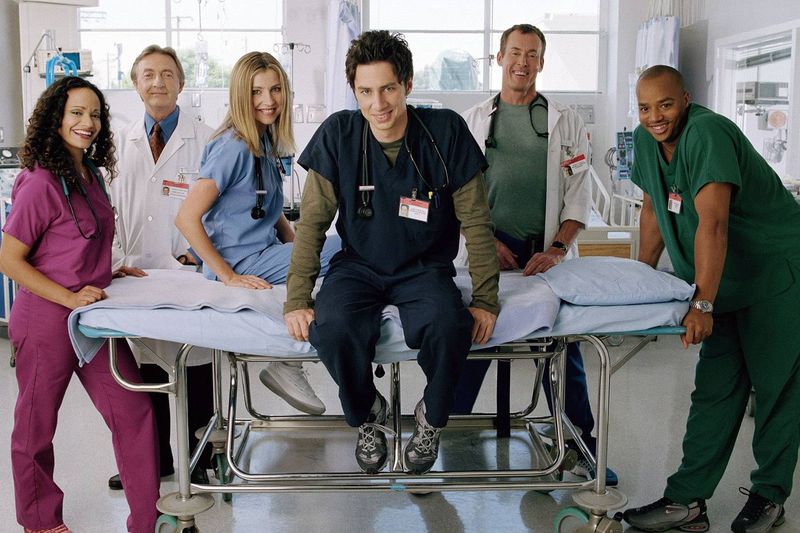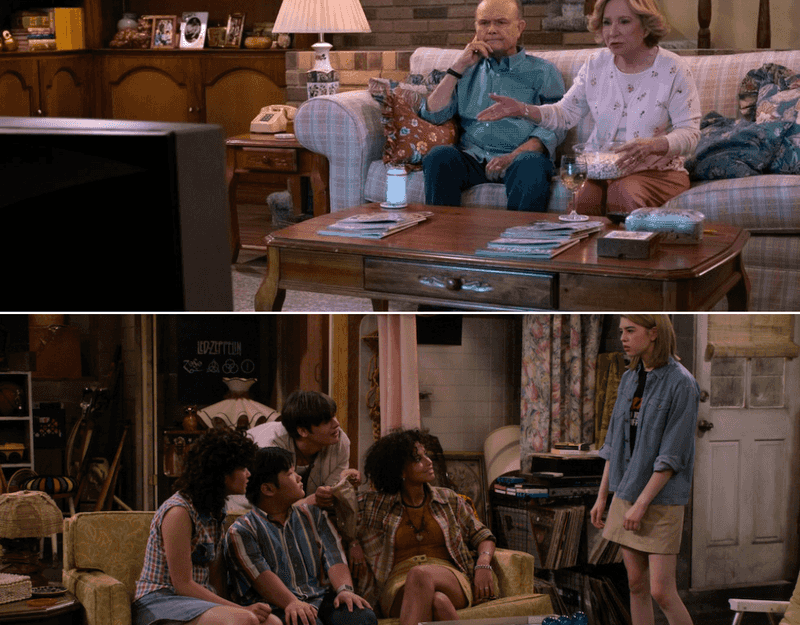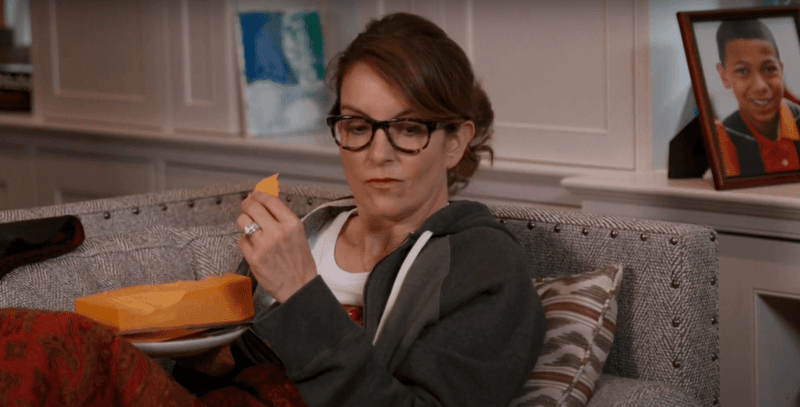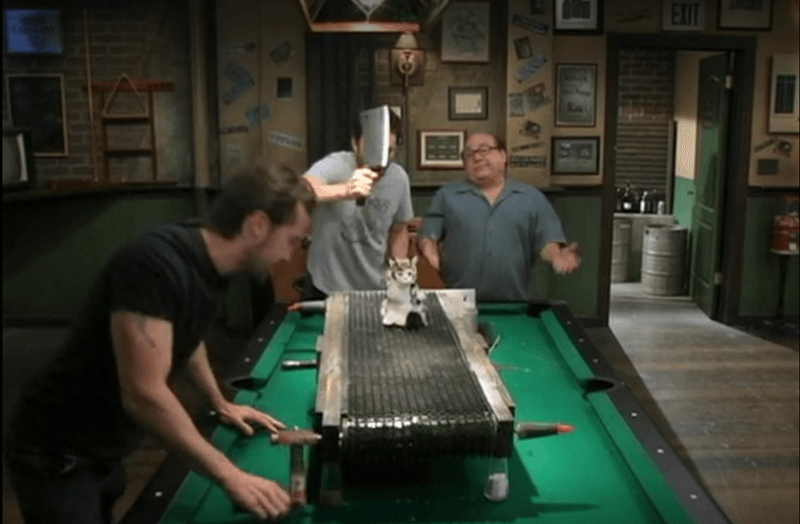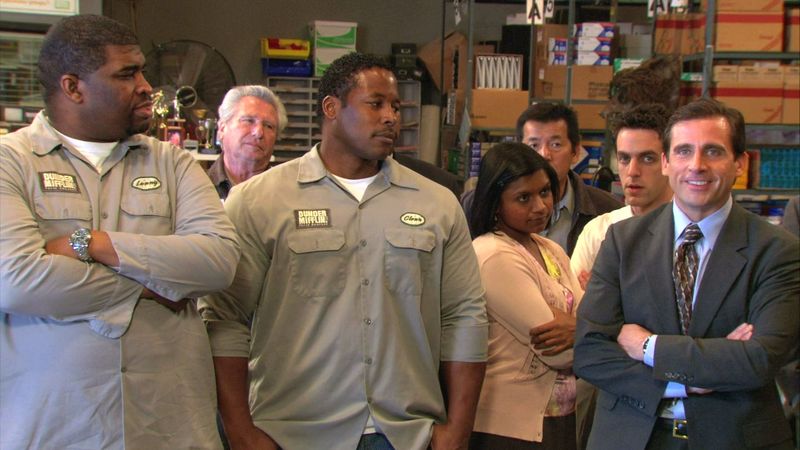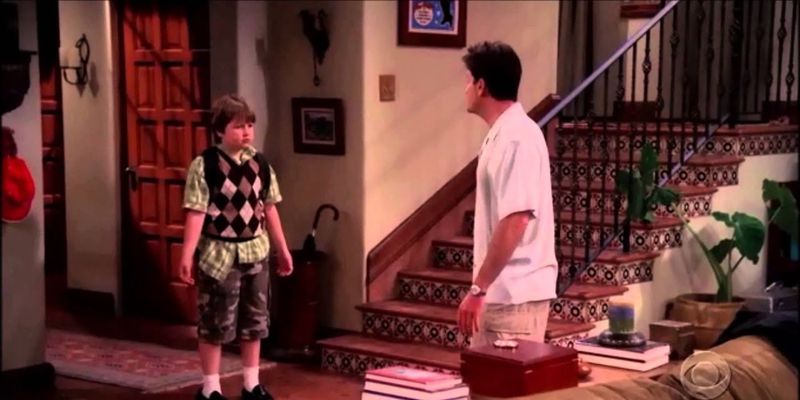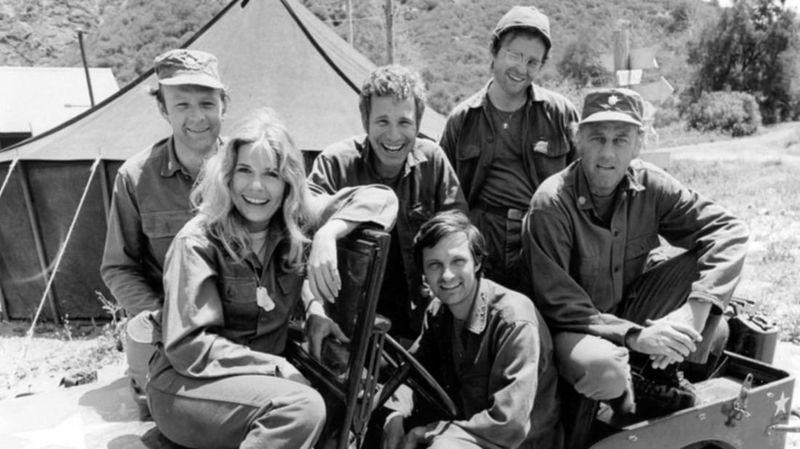In the vibrant world of sitcoms, props often play characters of their own. These tangible elements bring authenticity to scenes, setting the mood and enhancing narratives. However, over the course of a series, some beloved and notable props mysteriously vanish, never to be seen again. From paintings to pool tables, these items often disappear mid-season, leaving fans to wonder what happened. Here, we explore 15 sitcom props that quietly exited the stage, with writers hoping viewers wouldn’t notice their absence. Each item tells its own story of creative decisions, production changes, or even simple oversights.
1. The Painting in Friends – Monica’s Mysterious Door Peephole Art
Monica’s apartment in Friends was home to many quirky décor choices, but none as enigmatic as the abstract painting near the door in early seasons. With its vibrant colors and bold strokes, it was a noticeable feature. Yet by Season 3, it had vanished, replaced by the famous yellow peephole frame that became a series hallmark. This change was subtle but marked a shift in the apartment’s aesthetic. The crew felt the painting no longer complemented the evolving style of the set. Its disappearance, although quiet, was a strategic move to streamline the show’s visual narrative.
2. The Couch in How I Met Your Mother – MacLaren’s Missing Booth
At MacLaren’s Pub, the booth where Ted, Robin, Marshall, Lily, and Barney gathered felt like a second home. However, eagle-eyed viewers noticed changes in its cushions and, in some shots, its complete absence. This booth was central to many legendary moments, yet continuity errors and set updates between seasons led to its inconsistency. These subtle changes might have gone unnoticed by casual viewers but stirred discussions among devoted fans. The booth’s fluctuating presence highlighted the challenges of maintaining continuity in long-running series. Despite its vanishing act, the booth remained iconic in the show’s lore.
3. Leonard’s Star Trek Toy in The Big Bang Theory
Leonard’s apartment was a treasure trove of geek culture, with memorabilia adorning every corner. Among these was a prized Star Trek transporter toy, a nod to his sci-fi passions. In early episodes, it proudly sat on his shelf, drawing admiration from fellow fans. Yet, as the series progressed, the toy quietly disappeared, leaving a void for those who noticed. No explanation was offered within the show, leading to speculation. Was it lost, broken, or simply forgotten? Leonard’s missing toy is a reminder of the transient nature of props, sometimes lost amidst evolving storylines.
4. The Urkel Mobile in Family Matters
Steve Urkel, the quintessential nerd, was known for his bizarre inventions and eccentric gadgets. Among them was the Urkel Mobile, a clown-like bicycle that became synonymous with his character in Season 1. It was as quirky as Urkel himself, capturing attention with its bright colors and unusual design. Yet, as the series evolved, the Urkel Mobile vanished, making way for his more sophisticated inventions like the transformation chamber. The decision to retire the bike was strategic, allowing writers to explore new dimensions of Urkel’s genius. Its disappearance marked a shift in the show’s comedic focus.
5. The Tanner Family’s Dog, Comet, in Full House
Comet, the Tanner family’s Golden Retriever, was more than just a pet; he was a beloved character in Full House. His antics and loyalty endeared him to fans, making him a staple in the family’s adventures. However, as the seasons progressed, Comet’s appearances became sporadic until he quietly faded from the show. The real-life aging of the dog actors and practical considerations led to this decision. While his absence was felt, the legacy of Comet’s joyful presence lingered. His loyal spirit was emblematic of the warmth and love that defined the Tanner household.
6. The Bar’s Jukebox in Cheers
Cheers was the place where everybody knew your name, and the bar’s jukebox was a beloved feature in the early seasons. It played the soundtrack to many heartfelt and humorous moments, adding a nostalgic charm to the setting. But as the mid-’80s approached, the jukebox quietly disappeared, a casualty of set redesigns. The crew needed more space to accommodate background extras, and the jukebox was deemed expendable. Its departure went largely unnoticed but symbolized the subtle changes made to refresh the show’s environment. Despite its absence, the spirit of Cheers remained timeless.
7. The Conner Family’s Phone in Roseanne
In Roseanne, the Conner household was a reflection of the typical ’90s American family, complete with a wall-mounted rotary phone. This staple of domestic life facilitated countless conversations and comedic moments. However, as technology advanced, the rotary phone was replaced with a modern cordless model. This transition marked a quiet yet significant update in the show, reflecting real-world tech upgrades. The change signaled the passage of time and the evolution of family dynamics. Though the phone changed, the essence of the Conner family’s relatable chaos remained unchanged, connecting viewers to their own experiences.
8. The Magic Door in Scrubs
Sacred Heart Hospital in Scrubs was a place where reality and fantasy often blurred, thanks to the mysterious “magic door.” This prop led to bizarre and humorous fantasy sequences, serving as a portal to the character’s imaginations. However, as the series matured, the magic door ceased to appear. The writers opted for more grounded storytelling, focusing on character development and realistic narratives. While the absence of the door was felt by fans who cherished its whimsy, the show continued to explore the humor and heart at the core of the hospital’s daily life.
9. The Coffee Cup in Seinfeld
Jerry’s apartment in Seinfeld was filled with peculiarities that added to its charm, including a “World’s Greatest Dad” mug seen in early episodes. Despite Jerry not being a father, the mug became an oddly fitting part of the apartment’s landscape. Its disappearance was subtle yet notable to detail-oriented viewers. Likely a prop oversight, the mug’s removal was never addressed on screen. This small change didn’t alter the essence of Seinfeld but highlighted the show’s ability to evolve while maintaining its comedic core. The mug’s brief tenure remains a quirky footnote in the series’ history.
10. The Pizza in That ‘70s Show
In That ’70s Show, the Forman’s basement was the epicenter of teenage camaraderie, often accompanied by hot slices of pizza. This cheesy delight was a constant in the early seasons, symbolizing the carefree spirit of youth. However, as the show progressed, pizza became a rare sight. Actors reportedly grew tired of eating fake pizza, prompting its gradual removal from scenes. This change, while minor, reflected the evolving dynamics of the group’s hangout sessions. Despite the absence of pizza, the basement remained a beloved haven for laughter, friendship, and coming-of-age adventures.
11. The Monkey in 30 Rock
In the zany world of 30 Rock, Liz Lemon’s pet monkey, Grizz, made a brief but memorable appearance in Season 1. This primate companion added an extra layer of absurdity to the show’s humor. However, the logistical challenges and high costs of filming with a real monkey led to Grizz’s swift exit. The writers chose to focus on more sustainable comedic elements, allowing for greater flexibility in storytelling. While Grizz’s presence was short-lived, the monkey remains a quirky part of 30 Rock’s early chaotic charm, a testament to the show’s fearless comedic experimentation.
12. The Bar’s Pool Table in It’s Always Sunny in Philadelphia
Paddy’s Pub, the dysfunctional core of It’s Always Sunny in Philadelphia, once featured a pool table that added to the bar’s shambolic allure. It seemed fitting for the gang’s antics, providing endless opportunities for mischief. Yet, as the series continued, the pool table vanished, reflecting a realization by the writers: in the chaotic world of Paddy’s, nothing remains unscathed. The gang would have destroyed it long ago. Its absence was a nod to the show’s self-awareness and commitment to its anarchic spirit, maintaining the unpredictable essence that fans adore.
13. The Ladder in The Office
Dunder Mifflin’s warehouse in The Office was a hub of pranks and chaos, with a sturdy ladder playing a supporting role. This ladder was pivotal in several comedic setups, yet it vanished after Season 3. Safety concerns were the primary reason, especially after Steve Carell’s injury on set. The decision to remove the ladder underscored the importance of safety in production settings. While its absence altered some dynamics, the warehouse continued to host a myriad of hilarious antics, maintaining the show’s signature blend of humor and heart.
14. The Apartment’s Window in Two and a Half Men
Charlie Harper’s Malibu apartment in Two and a Half Men was a symbol of bachelor luxury, complete with stunning ocean views. Early episodes featured a prominent window, framing the scenic backdrop. However, as the series evolved, the window mysteriously turned into a wall. This set inconsistency was a result of crew redesigns, prioritizing interior filming logistics over external aesthetics. The change, though perplexing, allowed for greater flexibility in shot composition. Despite the vanishing window, Charlie’s apartment remained a key setting for comedic mischief and familial chaos, integral to the show’s enduring appeal.
15. The Laugh Track in *M*A*S*H*
*M*A*S*H* began with a laugh track underscoring its comedic moments, a common practice in early television. This auditory cue guided audiences through the humorous aspects of the war-time setting. However, as the series delved into deeper, more dramatic themes, the laugh track was phased out during serious scenes. This shift reflected a growing sensitivity to the subject matter, allowing the narrative’s gravity to resonate more profoundly. The decision marked a turning point in the show’s tone, enhancing its reputation for blending humor with poignant storytelling. *M*A*S*H*’s legacy endures, celebrated for its impactful evolution.
